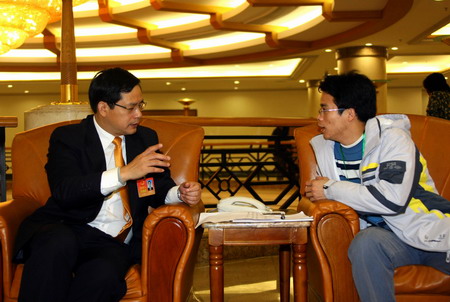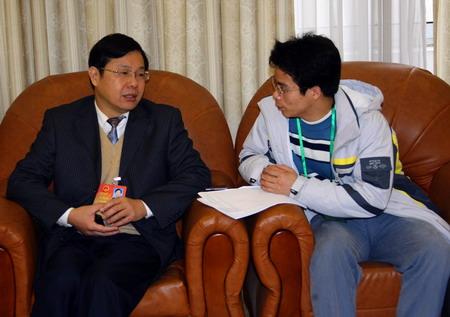Economy
Scheme of new cross-border economic zone with Vietnam
By Rong Xiandong, Huo Yan and Huang Feifei in Nanning (chinadaily.com.cn)
Updated: 2010-02-01 17:15
 |
Large Medium Small |
Nanning: South China's Guangxi Zhuang autonomous region and Vietnam have approved the framework agreement to establish a new cross-border economic zone in the latest effort to further boost the economic and trade cooperation between China and its Southeast Asian neighbor.
The move is part of a broad effort to further enhance bilateral economic ties between China, the third-largest economy and one of the fastest-growing economies in the world, and the Association of Southeast Asian Nations (ASEAN) following the establishment of the China-ASEAN free trade area (FTA) early this year.
|
|
The framework plan for the new cross-border economic zone between Dongxing, a city administered by Fangchenggang, a port city in Guangxi, and Mong Cai city, the largest border trade zone in northern Vietnam, had been approved by the Guangxi regional government and is now pending approval from the central government, Mo Gongming, mayor of Fangchenggang, said in an exclusive interview with China Daily on the sidelines of the 3rd session of the 11th people's congress of Guangxi in Nanning, capital of the region. The meeting ran from January 27 through 31.
Mo added that the plan had been approved by the Vietnamese government in 2009. Nguyen Anh Dzung, consul general of the Consulate General of Vietnam in Nanning, confirmed the approval of the plan by Vietnam at a reception marking the 60th anniversary of the establishment of the diplomatic ties between Vietnam and China in Nanning on January 30.
According to the initial plan, the new cross-border zone will cover about four square kilometers in Mong Cai city and about 5.8 kilometers in Dongxing in the first phase and the city hopes to expand the size of the Dongxing section of the zone to around 13 squire kilometers in the future, said Liu Quanyue, mayor of Dongxing.
|
|
Dongxing, the only Chinese city with both land and sea borders with ASEAN, has a total area of 540.7 square kilometers and a population of 110,000. Mong Cai, a key Vietnamese city open to the outside world with preferential government policies, has a total area of about 520 square kilometers and a population of about 100,000.
According to the plan, the new economic zone is designed to replace the current four-square-kilometer cross-border economic zone in Dongxing approved by China's cabinet, the State Council, in 1992, said Mo.
The mayor of Fangchenggang added the new zone will be isolated from residential areas, which differs from the existing one.
"We are positive about the project (the new cross-border economic zone). It's a new concept and a new pattern of (cooperation) for both sides. The two sides need to have more discussions on specific policies as well as content and scope of the cooperation," Nguyen said.
"A joint team has been established to push for specific cooperation between Dongxing and Mong Cai and China should speed up the process of cooperation," said Liu.
A second bridge will be built on Beilun River on the border between China and Vietnam as part of the new infrastructure to further boost border trade in the future Dongxing-Mong Cai economic zone, Mo said.
The current bridge, erected in 1958, can hardly meet the needs of significantly increasing passenger and cargo transportation with the establishment of the China-ASEAN FTA and rapid development of the Guangxi Beibu Bay economic zone.
In 2009, nearly 4.9 million people crossed the Dongxing border, rising from about 4.6 million in 2008, according to the mayor of Dongxing.














